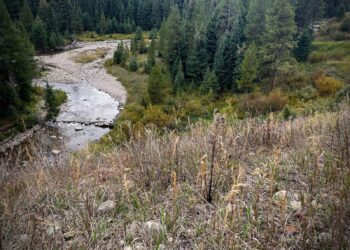The lowdown on tires for the winter
By Bay Stephens EBS Editorial Assistant
What’s the most important factor in keeping cars on the road in the winter? Experts overwhelmingly agree that it’s tires.
Although having four-wheel or all-wheel drive is helpful for climbing a hill, when a car brakes it doesn’t matter how many tires have power. No technology built into a vehicle is as crucial as the technology that connects a vehicle to the road.
With that in mind, here are some tire options to consider for the winter months:
All-season tires
Probably the most common tire on the road most of the year, all-season tires have a longer lifespan because they wear slowly. They have deeper tread than summer tires and are built to maintain traction in mud and light snow.
However, the rubber compound that comprises all-season tires is designed to work best in warm weather. Below 40 degrees Fahrenheit, the rubber in all-season tires becomes rigid and traction is reduced even on dry asphalt, much less snow and ice.
Winter tires
Winter tires or snow tires have specific modifications that allow them to grip better in the cold and on snow and ice. They are made of a far more pliable rubber than all-season tires. As temperatures drop, snow tires will continue to be flexible, contouring at a microscopic level to the imperfections of the road.
Snow tires have a deeper tread, which gives snow and slush somewhere to go instead of between the tire and the road surface. The same thing takes place at a microscopic level, as well. When driving on ice, tires melt a very thin layer so that water is between the tire and a grippable surface. To give that moisture somewhere to go, tire manufacturers have developed tread with microscopic pores so that rubber will actually maintain contact with the road.
These tires are also siped, which means that every block of tread has cuts in it, allowing it to move and contour to the surface even more than solid tread blocks.
All these features combine for better traction. In a brake test conducted by Tire Rack using the same models of BMW coupes equipped with summer tires, all-season tires and studless snow tires, the vehicles came to a stop after 47 feet, 39 feet 10 inches, and 21 feet 2 inches, respectively. Studless snow tires stopped in nearly half the distance of all-season tires.
Winter tires aren’t designed for summer, though. Their softer rubber wears down quickly on dry roads. Having different tires for the summer will ensure longevity for both sets.
All-weather tires
All-weather tires are a bit of a hybrid between winter and all-season tires. According to John Chepulis, owner of Tire World in Bozeman and Four Corners, they have far more siping than an all-season tire but will not wear as quickly as a winter tire.
“They [don’t have] quite as good of traction as the snow tire but they [have] a lot better traction than an all-season tire,” Chepulis said.
Studded tires
With tungsten carbide studs embedded in the tread, studded tires are designed to literally dig into the ice beneath them. Although they were the gold standard two decades ago, the technological innovations made in studless snow tires have largely closed the gap.
According to an overview of tire studies by Pemco Insurance, “Consensus seems to hold that old-fashioned studs still perform best on clear ice that’s at or near the freezing mark. However, studless models have the edge in stopping and handling when temps drop below freezing and on wet or dry pavement.”
Studded tires are the noisiest option and are known for damaging roads. According to TireBuyer.com, only six states allow studded tires without restrictions. The Montana Department of Transportation allows studs from Oct. 1 to May 31.
Other helpful info
People often think that if tires have a “M + S” symbol on the sidewall, they are designed for mud and snow. However, the Tire Industry Association asserts that if tires only have this symbol, they have not been tested under winter conditions.
Instead, look for a symbol of a snowflake within a mountain on a tire’s sidewall, which, according to TireBuyer.com, shows it is approved by the Rubber Manufacturer’s Association for “severe snow service.”














